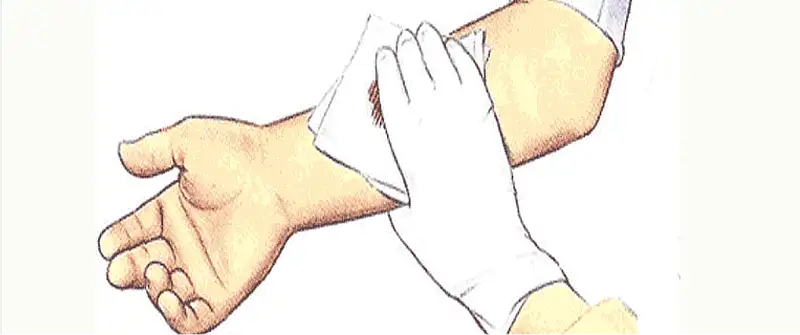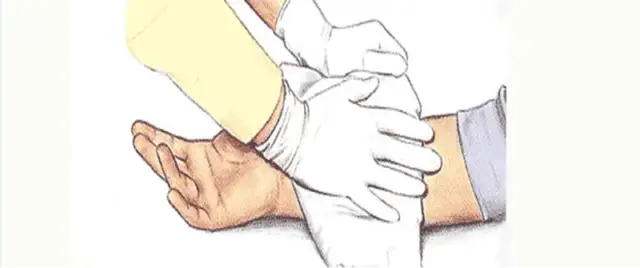Stop A Wound From Bleeding – The Most Important Thing To Do

An essential and practical First Aid skill.. How to stop the bleeding. The method is surprisingly effective for most ordinary cuts, and even those that you may think are too big for this to work.
In most cases, the most important thing to do is to apply pressure. Here’s what I mean..
Bleeding usually looks worse than it really is. Having said that though, when a large blood vessel is cut or torn, the person can lose a lot of blood within minutes. This tip does not mean that you shouldn’t call 911 when things are ‘bad’.
For example, Call 911 if…
- There is a lot of bleeding
- You cannot stop the bleeding
- You see signs of shock
- You suspect a head, neck, or spine injury
- You are not sure what to do
However, until help arrives (assuming it’s that bad) you can at least help to stop the blooding to the extent possible. Here’s how to stop the bleeding:
You can stop most bleeding by applying pressure.
How To Stop The Bleeding
Get the First Aid Kit, or have someone get it. Get out some gauze. You do have a First Aid Kit, right? (Do you have one in your vehicle too?)
If the cut or scrape is minor, and dirty, wash the area with clean water (or saline if you have it) before applying the dressings. If you have a pretty substantial bleed, go to the next step to quickly try and get the bleeding to stop..
Put a dressing on top of the wound (gauze pad or other clean dressing).
Here’s the key to success.. Apply direct PRESSURE on the dressing. Use the flat part of your fingers or the palm of your hand. Hold pressure on the wound, keep pressing, for several minutes.
Just the other day, our friend’s were visiting. The daughter somehow got a small cut on her leg. Oh, and she doesn’t like the sight of blood. Mrs. J handed her a small gauze and told her to hold it, press it, against the cut for awhile. The problem was.. she kept pulling it away to look and see if the bleeding had stopped. Nope. Why? Because she kept peeking! And naturally, she became increasingly freaked out (the sight of blood thing..). After setting a timer for 2 minutes and making sure she kept holding pressure on it, what do you know – the bleeding stopped.. It’s all about the pressure.
Okay, back to the topic:
If the wound is more than minor and the bleeding does not stop with the first gauze layer, add more dressings on top of the first (don’t peel away the first one) and press harder.
Keep pressure on the wound until it stops bleeding.

If you can’t keep pressure on the wound, wrap a bandage or tape firmly over the dressing to hold the dressing in place.
Also very important – do not lift the dressing to see if the bleeding has stopped. This will tear the clotting and start the process over again. Just add on more dressings over the bloody dressing and continue pressure. Leave all dressings on as you add more.
Again, if this is obviously serious, get professional medical help and/or call 911.
A dressing can be a gauze pad or pads, or any other clean piece of cloth.
Small wounds will heal better and with less infection if an antibiotic ointment is used.
A few other popular additions to first aid kits to help stop bleeding are as follows..
I always keep an ‘Israeli Emergency Bandage’ with my First Aid Kits. I highly advise that you have one too. They can be really effective on a very serious wound – at least buying time, so to speak, while getting to medical help.
[ Read: How To Use An Israeli Bandage To Stop Traumatic Bleeding ]
[ Read: Stretch Wrap Self Adhering Bandage | A Must-have First Aid Supply ]
